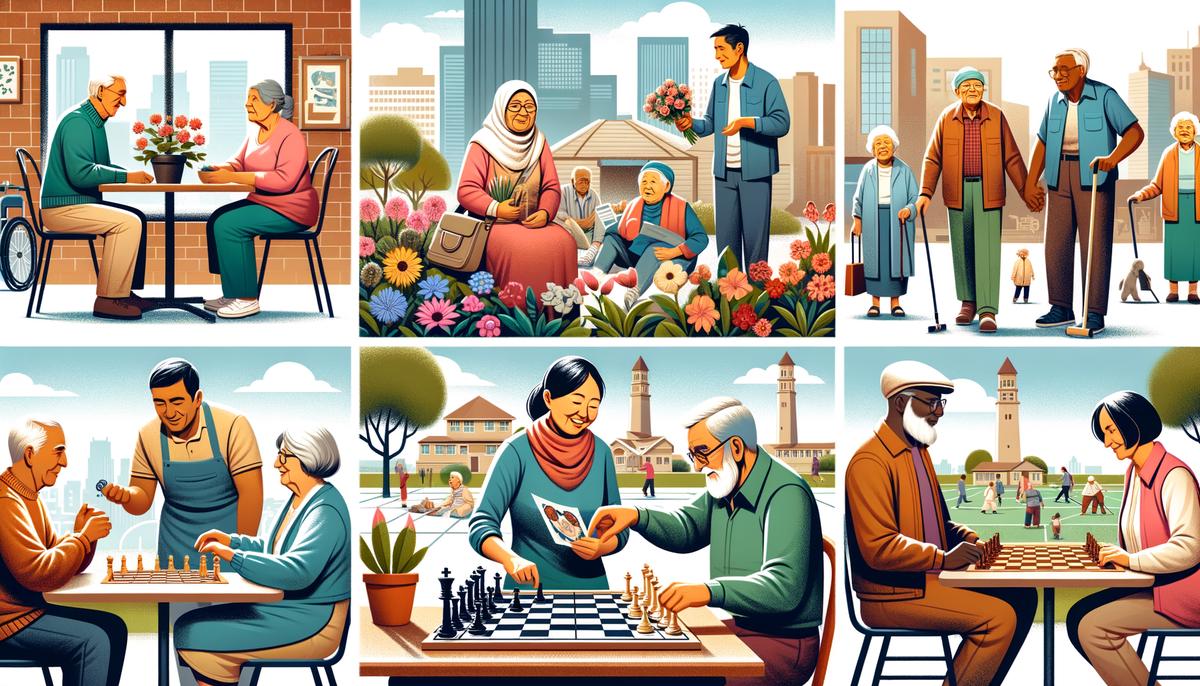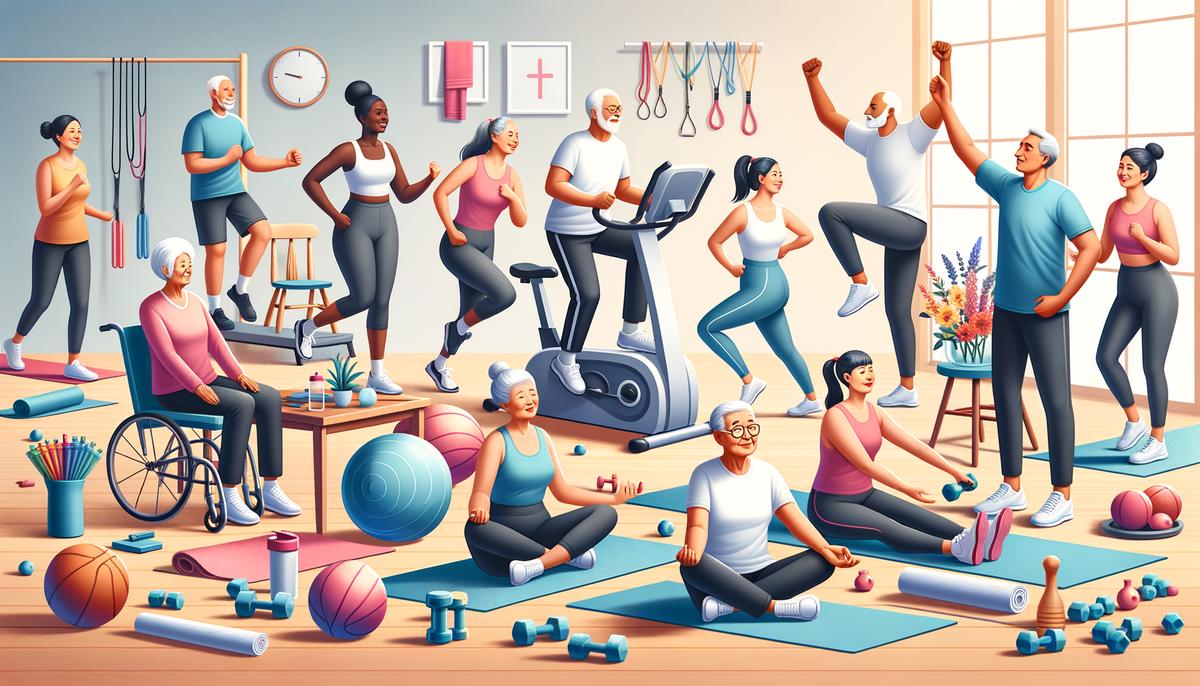Choosing to live in a community after the age of 55 opens up a world filled with opportunities for connection, health, and happiness. This article explores the profound impact that community living has on our lives, highlighting how it enriches both our physical and mental well-being, and wraps us in a warm embrace of care and support. It’s about discovering how life in these vibrant communities can be transformative, fostering a sense of belonging, joy, and overall health.
Enhancing Social Connections
Living in a community after the age of 55 offers a bundle of joys and comforts, but one of the brightest spots in this setup is the warmth of social connections. Let’s uncover how these connections cast a golden glow on the quality of life during the years that are often coined as the ‘golden age’.
A Network of Friendship and Support
Imagine stepping outside your door to a world where friends await, ready to share stories over a morning walk or a cup of coffee. Community living brings people together, creating a network of friendships that are both enriching and supportive. These bonds go beyond mere acquaintances; they form a safety net that catches you during times of need. Whether it’s a ride to the doctor or someone to water your plants while you’re away, having a friend nearby is a blessing that adds a layer of ease to daily life.
Shared Experiences and Laughter
Activities and clubs within communities are the playgrounds for adults seeking joy and learning in later years. Be it through painting classes that splash colors of creativity or book clubs that spark stimulating conversations, these shared experiences bring laughter and excitement. Laughter, as we know, is a powerful medicine, reducing stress and improving our mental health. Engaging in such communal fun fosters a sense of belonging and contributes profoundly to emotional well-being.
Boost to Physical Health
An often-overlooked advantage of social connections in community living is the positive impact on physical health. Studies show that people who maintain close friendships and social ties tend to live longer and healthier lives. Engaging with others motivates us to stay active, whether it’s through organized sports, group exercises, or simply taking walks together. This blend of social and physical activity strengthens not just the heart, but the spirit too.
Cultural and Intellectual Vibrancy
Community living offers a rich tapestry of cultural and intellectual experiences, thanks to the diverse backgrounds of its residents. Conversations can turn into learning sessions, where one discovers new perspectives and ideas. This intellectual vibrancy keeps the mind sharp and curious, an essential factor in maintaining cognitive health as we age.
Emotional Security
Knowing that you are surrounded by people who care creates a profound sense of emotional security. This comfort is particularly poignant in later life, a period often marked by significant changes and, sometimes, loss. The presence of friends who understand and share these life stages can ease the transition, providing a cushion of emotional support.
The Power of Belonging
Ultimately, the gem at the heart of community living is the feeling of belonging. This sense, rooted in shared experiences and mutual support, confirms that you are part of something larger than yourself. It’s a powerful affirmation that life, with all its ups and downs, is a journey meant to be shared. This belonging infuses life after 55 with meaning and joy, proving that community living is not just about proximity; it’s about connection.
In weaving together the delicate threads of friendships, shared laughter, and mutual support, community living offers a vibrant tapestry of life after 55. It reassures us that, indeed, the best chapters of our lives can be enriched and illuminated by the power of social connections.

Promoting Physical Health
As we journey through the golden years of life, the significance of community living in enhancing physical health among seniors cannot be overstated. The blend of social interaction and physical activity inherent in these communities plays a pivotal role in promoting a healthier, more active lifestyle for older adults.
Staying Active with Ease
Within the heart of a community designed for seniors, physical activities become a natural part of daily life. These communities often boast a variety of amenities, including swimming pools, fitness centers, and walking trails, encouraging residents to engage in regular exercise. The convenience of having these facilities at one’s doorstep eliminates common barriers to fitness, such as long-distance travel or lack of suitable local venues. This accessibility ensures that staying active is not just an occasional endeavor but a seamless part of everyday life.
Motivation through Group Dynamics
There’s something inherently motivating about being part of a group with similar goals. Retirement communities leverage this by offering group exercise classes and sports clubs. Participating in yoga, water aerobics, or golf with peers not only makes these activities enjoyable but also fosters a sense of camaraderie. It’s easier to find motivation when you’re surrounded by friends who are also aiming to lead a healthy lifestyle. This group dynamic often leads to increased commitment to physical activity, resulting in noticeable improvements in health and wellbeing.
Customized Programs to Fit Every Need
Recognizing that each senior has unique health needs and physical capabilities, many retirement communities provide personalized exercise programs. These programs, designed by professionals familiar with the challenges and requirements of older adults, ensure that everyone, regardless of their fitness level, can participate safely and effectively. Tailored activities help in nurturing not only physical health but also a sense of achievement, as residents notice their progression and improvements over time.
The Integration of Nature and Movement
The design of senior living communities often emphasizes the integration of natural landscapes with living spaces. Easy access to well-maintained gardens and parks encourages outdoor activities such as walking, gardening, and bird watching. Engaging with nature is not only beneficial for physical health, promoting activities that improve strength, balance, and cardiovascular health, but also uplifts mental well-being. The serene settings provide a peaceful backdrop for exercise, enhancing the overall experience.
Health Monitoring and Support
An aspect of community living that significantly benefits physical health is the availability of health monitoring and support services. Many communities have healthcare providers on-site or partnerships with local health services to offer regular health screenings, fitness assessments, and physiotherapy sessions. This proactive approach to health care ensures that potential issues are identified and addressed early, enabling seniors to maintain their physical health and independently enjoy their activities for longer.
In wrapping up, the role of community living in promoting physical health among seniors is multifaceted, touching on aspects of accessibility, motivation, personalization, nature integration, and health support. These communities are not just about providing a space to live but about creating environments where seniors can thrive physically, enjoying their retirement years to the fullest. Through a carefully structured yet flexible approach to physical activity and wellness, senior living communities are revolutionizing what it means to age healthily and actively.

Supporting Mental Well-being
Living Together Brings Us Closer
In the journey beyond 55, community living emerges as a beacon of collective harmony, ushering in an era of mental well-being that radiates through every corner of life. This interconnected lifestyle, where every day is a blend of shared moments and personal growth, paves the way for a richness of spirit seldom found elsewhere.
The Warmth of Daily Interaction
Imagine stepping out of your front door to a world where every face is a friend and every greeting carries the warmth of familiarity. In a retirement community, the simple act of daily interaction is a tonic for the soul, dissolving the barriers of isolation that can sometimes shadow our later years. This constant stream of friendly exchanges, from a morning nod on a shared walk to an evening chat over dinner, stitches the fabric of a tightly knit community, ensuring no one feels left in the shadows.
A Sense of Purpose RekindledAs the calendar pages turn, finding a renewed sense of purpose becomes a quest for many of us. Community living fashions a stage where every talent, every interest, and every dream has room to flourish. Whether it’s contributing to a community garden, leading a workshop based on a lifelong skill, or guiding a local volunteer group, the opportunities to feel valued and needed abound. This reawakening of purpose fuels a sense of self-worth that is deeply intertwined with mental well-being.
- Shared Growth and Learning
The pursuit of personal development doesn’t pause with retirement. Community living cultivates an environment ripe for growth and learning, where the collective wisdom of its members become a shared treasure. Book clubs, art classes, and language lessons are not just activities but lifelines to a vibrant, intellectually stimulating life. This communal journey of exploration and discovery keeps the mind engaged, fostering a sense of achievement and mental agility.
- Navigating Life’s Challenges Together
Life, with its unpredictable twists and turns, can sometimes weigh heavily on our shoulders. In a retirement community, navigating these challenges becomes a shared endeavor. The presence of peers who have trodden similar paths, facing losses, health battles, or personal setbacks, creates an informal support network of profound empathy and understanding. This collective resilience, forged in shared experiences, offers comfort and guidance, reminding us that we are not alone in our struggles.
Calm in the Midst of Change
As we advance in years, changes in our physical health and personal circumstances can stir feelings of uncertainty. The community living model stands as a beacon of stability, offering predictable routines, consistent care, and a familiar environment. This consistency acts as an anchor, providing comfort and reducing the stress and anxiety that change can often bring.
In embracing the communal lifestyle, individuals beyond 55 discover a tapestry of emotional support, intellectual stimulation, and a sense of belonging that together weave the foundation of mental well-being. Community living shines as more than just a choice of residence; it’s a way of life that enriches the soul, nurtures the mind, and brings us closer in the most profound ways.

Accessibility to Healthcare
Living in a community setting, especially during our golden years, opens up a world of healthcare advantages that significantly influence senior health. This seamless access to healthcare is not just a convenience; it’s a game-changer in promoting a healthier, more vibrant lifestyle for seniors.
- Immediate Access to Health Care Services
One of the standout benefits of community living is the immediate access to health care services it provides. Many retirement communities have on-site medical facilities, making it incredibly easy for residents to attend check-ups or seek medical advice without the hassle of long trips. This ease of access encourages regular health monitoring, ensuring that potential health issues are caught and addressed early.
- Tailored Health Programs
Community living isn’t just about responding to health issues; it’s about preventing them. These communities often offer health programs specifically tailored to senior needs, ranging from nutritional advice to exercise classes designed to maintain and improve health. This proactive approach to wellness helps residents maintain their independence and enjoy a higher quality of life.
- Mental Health Support
The impact of community living on mental health cannot be overstated. Beyond the practicalities of healthcare, the sense of community, belonging, and the network of friendship provides a solid foundation for mental and emotional well-being. Social interactions and the availability of mental health resources within the community foster a supportive environment where seniors can thrive emotionally and mentally.
- Emergency Response Services
In addition to routine health care, many retirement communities are equipped with emergency response services. Whether it’s a fall in the night or a sudden health crisis, help is always at hand. This not only provides a safety net for residents but also offers peace of mind for their families, knowing that their loved ones are in a secure environment where prompt medical attention is guaranteed.
- Educational Resources for Healthy Living
Beyond immediate healthcare services, community living often includes educational resources that empower seniors to take charge of their health. From workshops on managing chronic conditions to seminars on healthy aging, these resources provide valuable information and tools for residents to lead healthier lives. This emphasis on education complements the healthcare services, creating a comprehensive health and wellness ecosystem within the community.
- Collaborative Care Approach
Finally, community living fosters a collaborative care approach. Healthcare professionals, staff, and residents often work together to create personalized health plans that take into account individual health needs, preferences, and goals. This personalized and collaborative approach ensures that each resident receives the care and support they need while also promoting independence and self-care.
In essence, the access to healthcare within community living settings plays a pivotal role in enhancing senior health. It’s about much more than convenience; it’s about creating an environment that promotes wellbeing, supports preventive healthcare, and provides comprehensive support for both physical and mental health. This holistic approach to healthcare is what makes community living a smart choice for seniors, offering them a pathway to not just live but thrive during their golden years.

As we’ve explored the myriad benefits of community living for those over 55, it becomes clear that this lifestyle choice is about far more than simply finding a convenient place to live. It’s about embracing a supportive network that uplifts us, engaging in activities that nourish our minds and bodies, and accessing resources that keep us thriving. Community living hence stands as a beacon for a fulfilling life, promising a blend of camaraderie, health, and joy. It underscores the fact that our later years can indeed be our best years, lived in the company of friends, surrounded by care, and in the pursuit of wellness.
Experience the power of AI with Writio – your go-to content writer. This article was crafted by Writio.
Leave a Reply